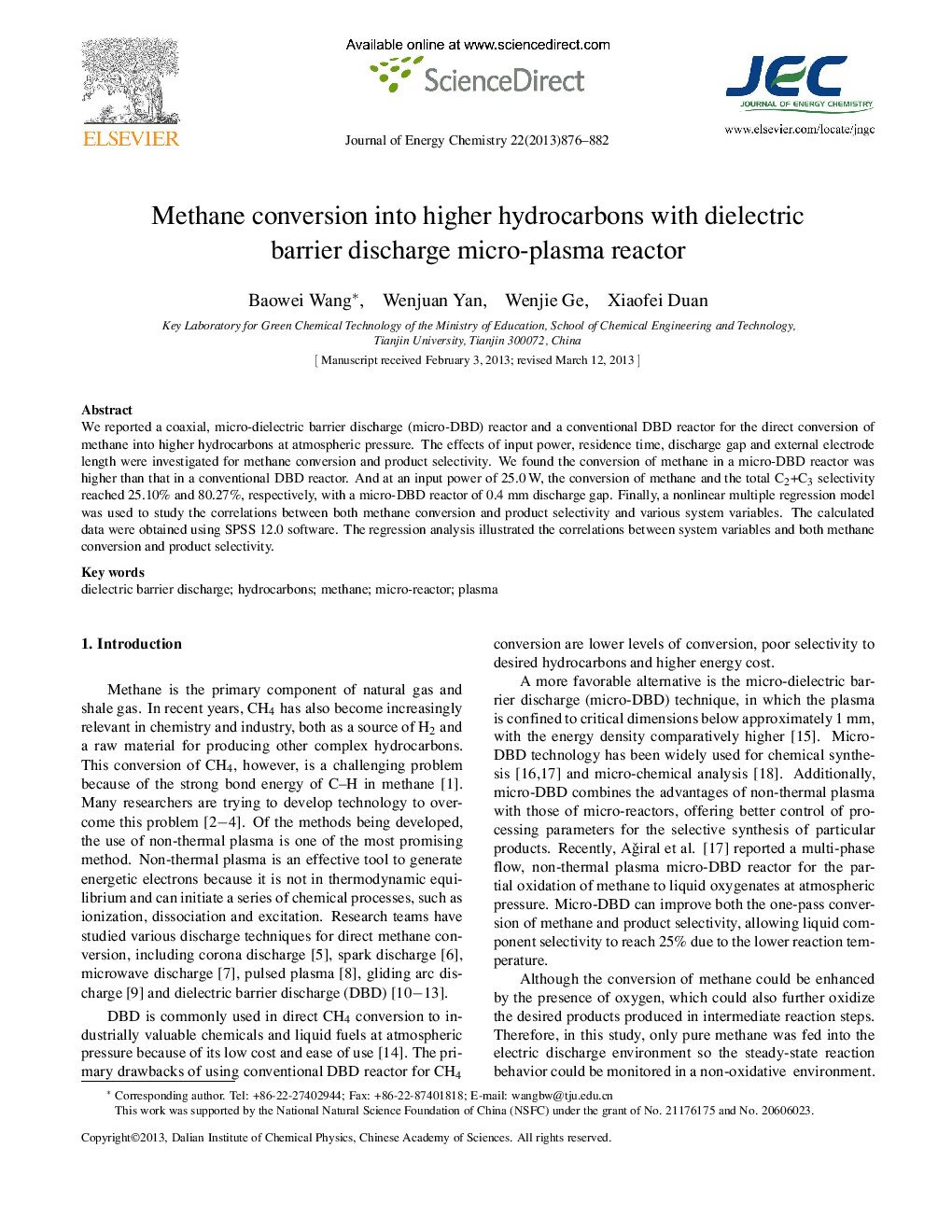| Article ID | Journal | Published Year | Pages | File Type |
|---|---|---|---|---|
| 63962 | Journal of Energy Chemistry | 2013 | 7 Pages |
We reported a coaxial, micro-dielectric barrier discharge (micro-DBD) reactor and a conventional DBD reactor for the direct conversion of methane into higher hydrocarbons at atmospheric pressure. The effects of input power, residence time, discharge gap and external electrode length were investigated for methane conversion and product selectivity. We found the conversion of methane in a micro-DBD reactor was higher than that in a conventional DBD reactor. And at an input power of 25.0 W, the conversion of methane and the total C2+C3 selectivity reached 25.10% and 80.27%, respectively, with a micro-DBD reactor of 0.4 mm discharge gap. Finally, a nonlinear multiple regression model was used to study the correlations between both methane conversion and product selectivity and various system variables. The calculated data were obtained using SPSS 12.0 software. The regression analysis illustrated the correlations between system variables and both methane conversion and product selectivity.
Graphical AbstractThe dielectric barrier discharge technology is a promising method for direct methane conversion. The conversion of methane was high and the carbon deposition reached the minimum for the micro-DBD reactor.Figure optionsDownload full-size imageDownload as PowerPoint slide
